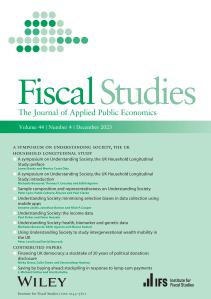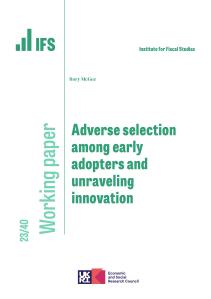Reports suggest that the government is planning on introducing new measures to tackle obesity, including a ban on television advertising of food and drink products that are high in fat, sugar or salt before the 9pm watershed. In part, this is motivated by new evidence that obesity is a risk factor for coronavirus, with obese individuals being more likely to be admitted to acute or critical care.
This would be a significant extension of existing regulations, which, since 2007, have prohibited the advertising of food and drink high in fat, sugar or salt during television broadcasting aimed at children.
Why restrict advertising?
There is large concern about the high levels of obesity in the UK, with nearly two third of adults and one third of children classed as overweight or obese. Advertising restrictions are one of a number of policies aimed at reducing people’s consumption of unhealthy foods.
The rationale for such policies rests on the existence of certain costs that people do not fully consider at the point of consumption. If it were the case that everyone was fully aware of the negative health consequences of eating badly, and this did not have any cost to wider society, then there would be no role for government intervention.
However, this is unlikely to be the case. Obesity and other diet-related diseases increase the burden on the NHS, which creates costs for society more broadly. And people may not be fully informed about the consequences of poor diet, or may lack self-control, which means they make choices they later regret. There is also evidence that children are less able to discern the persuasive intent of advertising, which means that advertising may contribute to children not appropriately weighing up the costs and benefits of their choices.
A majority of the advertising for less healthy foods seen by adults and children is before the 9pm watershed
Banning the advertising of unhealthy food and drink before the 9pm watershed would directly impact a large portion of the television advertising that people currently see. In 2015, 60% of all television advertising for food and drink high in fat, sugar or salt, and for restaurants and bars (most of which was for fast food chains) that was seen by adults was shown before the 9pm watershed; for children, this was even higher, at 70%.
How firms respond to restrictions would be a key determinant of the reduction in people’s exposure to advertising of unhealthy food and drinks
It is unlikely that extending advertising restrictions would lead to such a large reduction in the amount of advertising for unhealthy food and drinks that people actually see. This is because firms could increase their advertising of these products after the watershed or on other types of media.
Research has shown that this happened before. Following the introduction of the 2007 ban on advertising food and drink products that are high in fat, sugar or salt during children’s television, restricted adverts were shifted from children’s television to unrestricted non-children’s television.
In 2015, 95% of the high fat, sugar and salt food and drink brands that were advertised on television were advertised both before and after the watershed. This shows that, even without restrictions, many firms choose to advertise their products both pre and post-watershed. It is therefore likely that, were restrictions extended to include all television advertising aired before the watershed, firms would respond by shifting some portion of restricted adverts to after the watershed (or to other types of media). Given that many adults and children continue to watch television after the watershed this would offset some of the reduction in their advertising exposure achieved by the pre-watershed ban.
It will also depend on how advertising affects what people choose to eat and drink
The effectiveness of the policy at improving diets depends on how advertising determines what people choose to buy and eat. For example, an advert for Coca Cola could lead someone to buy Coke when they would otherwise have drunk water, but it could also just lead them to buy Coke instead of Pepsi. In the latter case, an advertising ban is likely to be less effective at getting people to eat more healthily.
Relatedly, restricting advertising of less healthy products still leaves firms able to promote other products in their range that are not high in fat, salt or sugar. For example, fast food restaurants are free to advertise products such as carrots or fruit boxes. If advertising of these healthier products increases consumption of less healthy, but similarly branded, alternatives, then the policy could be less effective than hoped.
This Observation draws on independent research published in a report prepared for the Obesity Policy Research Unit, which is commissioned and funded by the Policy Research Programme of the National Institute for Health Research. The authors also gratefully acknowledge financial support from the European Research Council (ERC) under ERC-2015-AdG-694822, the Economic and Social Research Council (ESRC) under the Centre for the Microeconomic Analysis of Public Policy (CPP), RES-544-28-0001, and the Open Research Area, ES/N011562/1, and the British Academy under pf160093.











